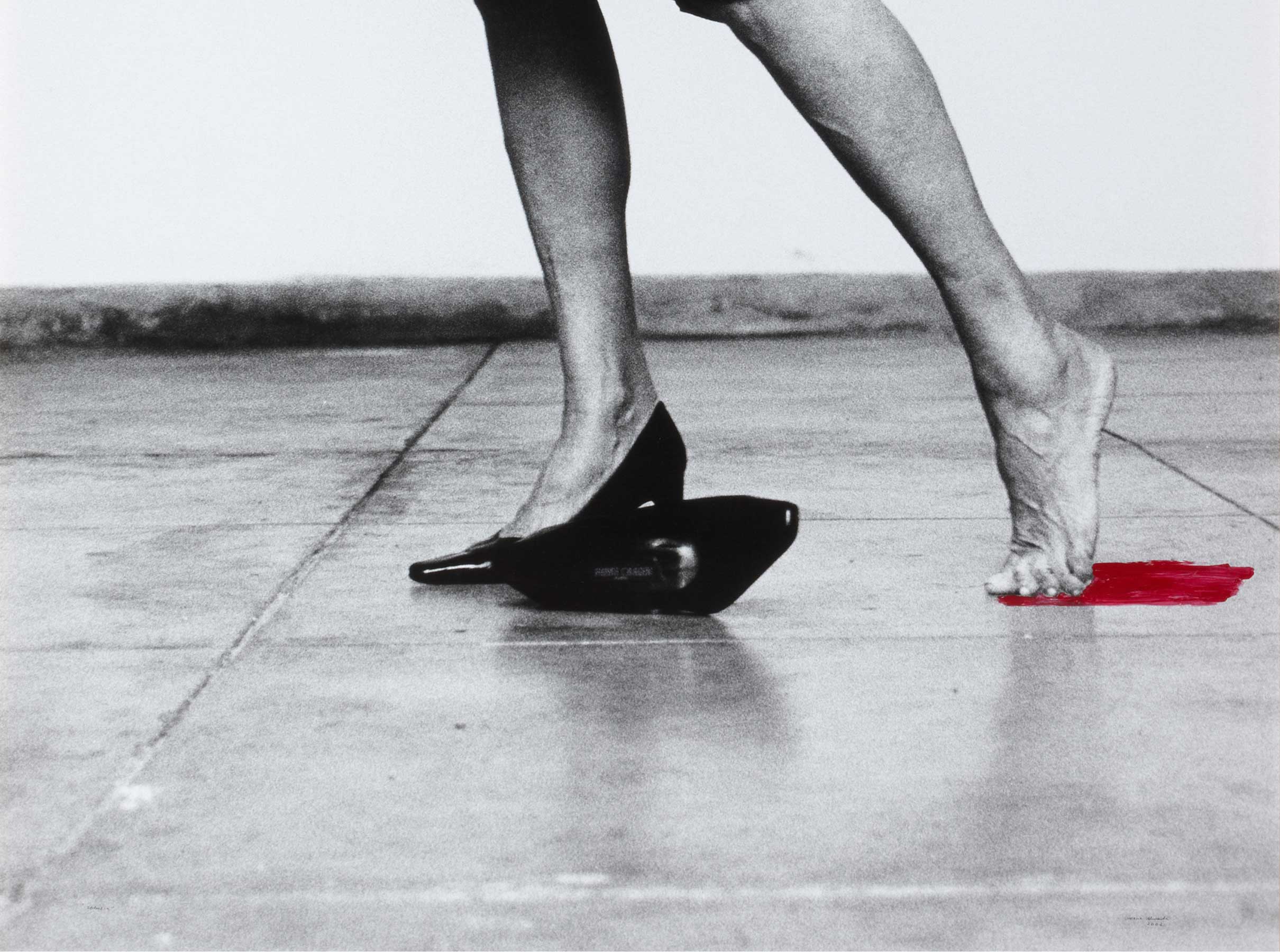Pensamientos [Pansies]
- 1994
- Acrylic on newspaper
- 57,5 x 40,7 cm
- Cat. D_238
- Acquired in 2004
Manolo Quejido began to work on his corpus of ‘pansies’ in the 1970s as an intimate dialogue with the masters of painting, from Caravaggio to Goya, from Cézanne to Warhol, in an attempt to thrash out the deepest meaning of painting taken as a specific language. That interest would continue throughout his career to the point that it became one of the macro-themes of his painting, as can be seen in this series of acrylics dated in 1994. An apparently commonplace decorative motif, the pansy is a flower of peculiar beauty with an enigmatic name [derived from the French pensée meaning ‘thought’’] whose petals show dark lines that seem to point towards an inner area that receives the significant name of ‘ovary’ in botany. Repeated curvilinear forms emerge from the stylisation of those elements and the whole series is identified by that recurring sign, with slight variations, on different newspaper backgrounds. The brushstrokes of the flower become pointing arrows and the petals a voluptuous, continuous line that gives the painting with a biomorphic, organically feminine look.
The multiple meanings of the name of the flower, a metalinguistic game underpinned by the idea of painting as a mechanism of the mind, as a way of thinking, cannot be left out of this idea of an essential representation of women. At the same time it is an invitation to separate what can be thought, what can be said, what can and cannot be represented, at least explicitly. As Miguel Cereceda has pointed out, the series is related to Ludwig Wittgenstein’s idea of ‘thought as a type of language’. Quejido sifts that notion and ends up with a reflection on the very limits of painting as a code with its own signs, one of his main areas of interest. The fact that the headlines can be seen on the newspaper that acts as the medium clearly confirms this, adding a layer of meaning to the work which intentionally distorts both the most sensual aspect of the representation and its direct referent: the flower itself. Our complex dialogue with the different signs that surround and shape us lies in that coexistence of medium and painting.
Other works by Manolo Quejido

![Pensamientos [Pansies]](/f/webca/INF/assets/img/fff.png)